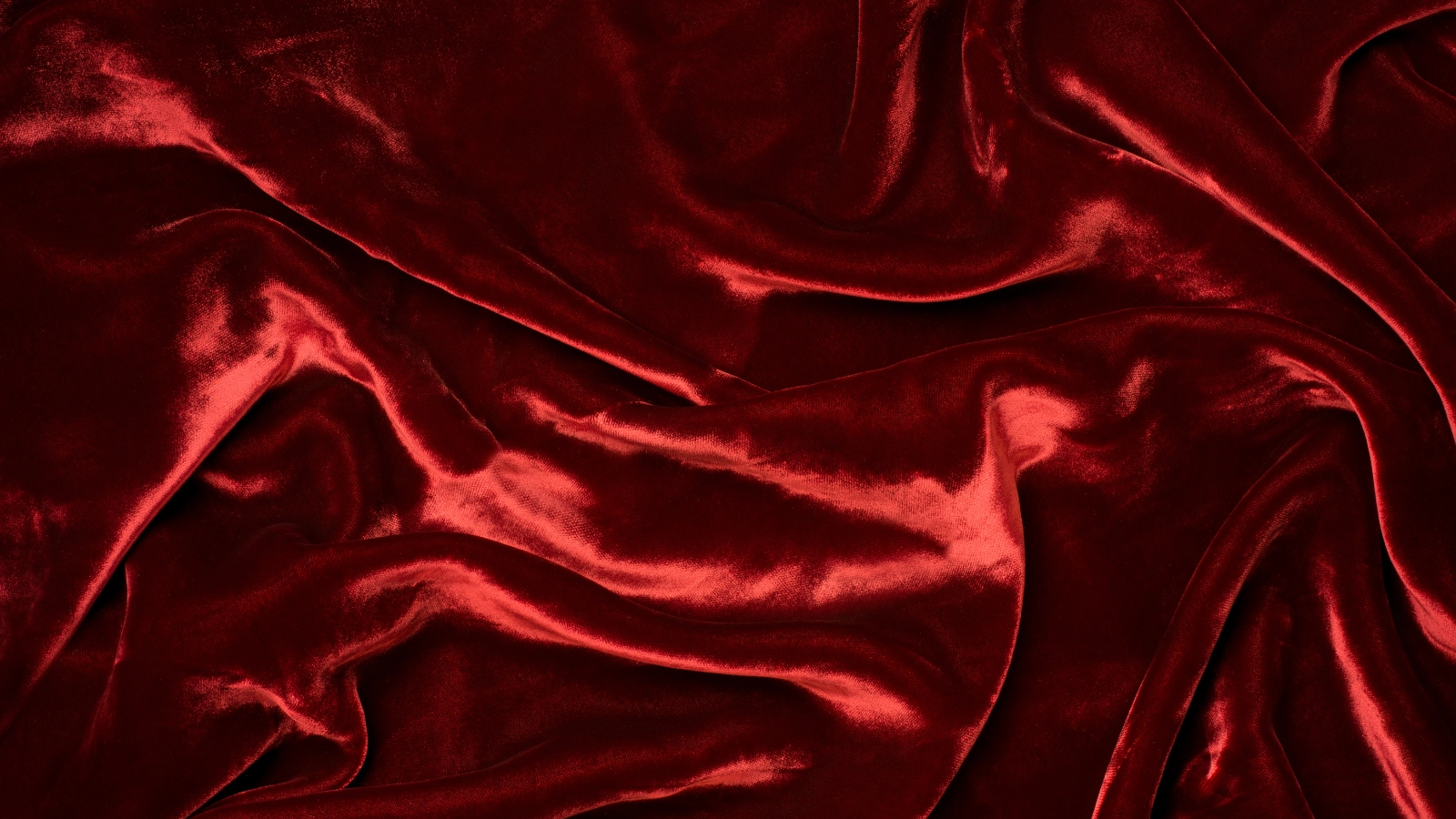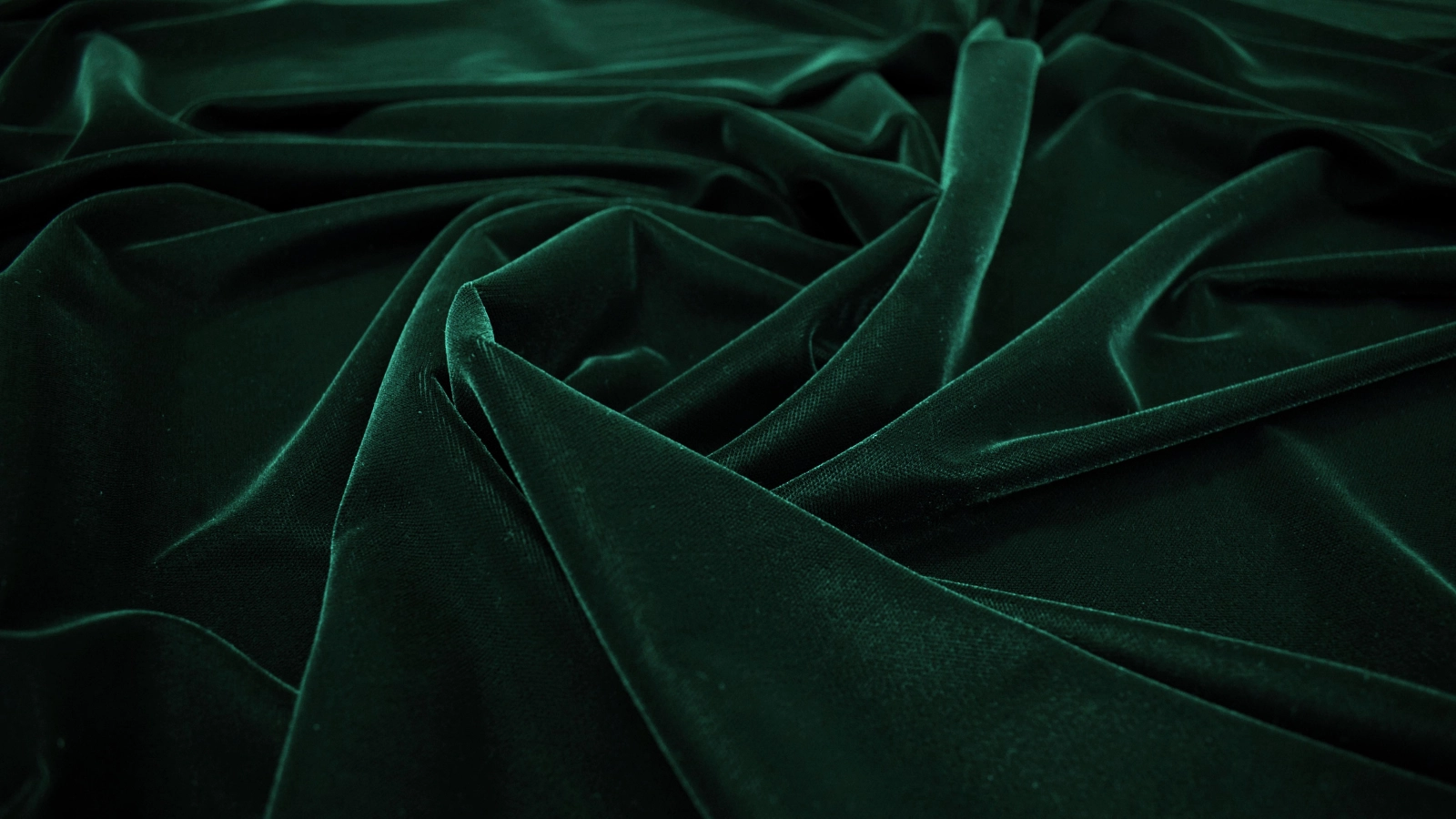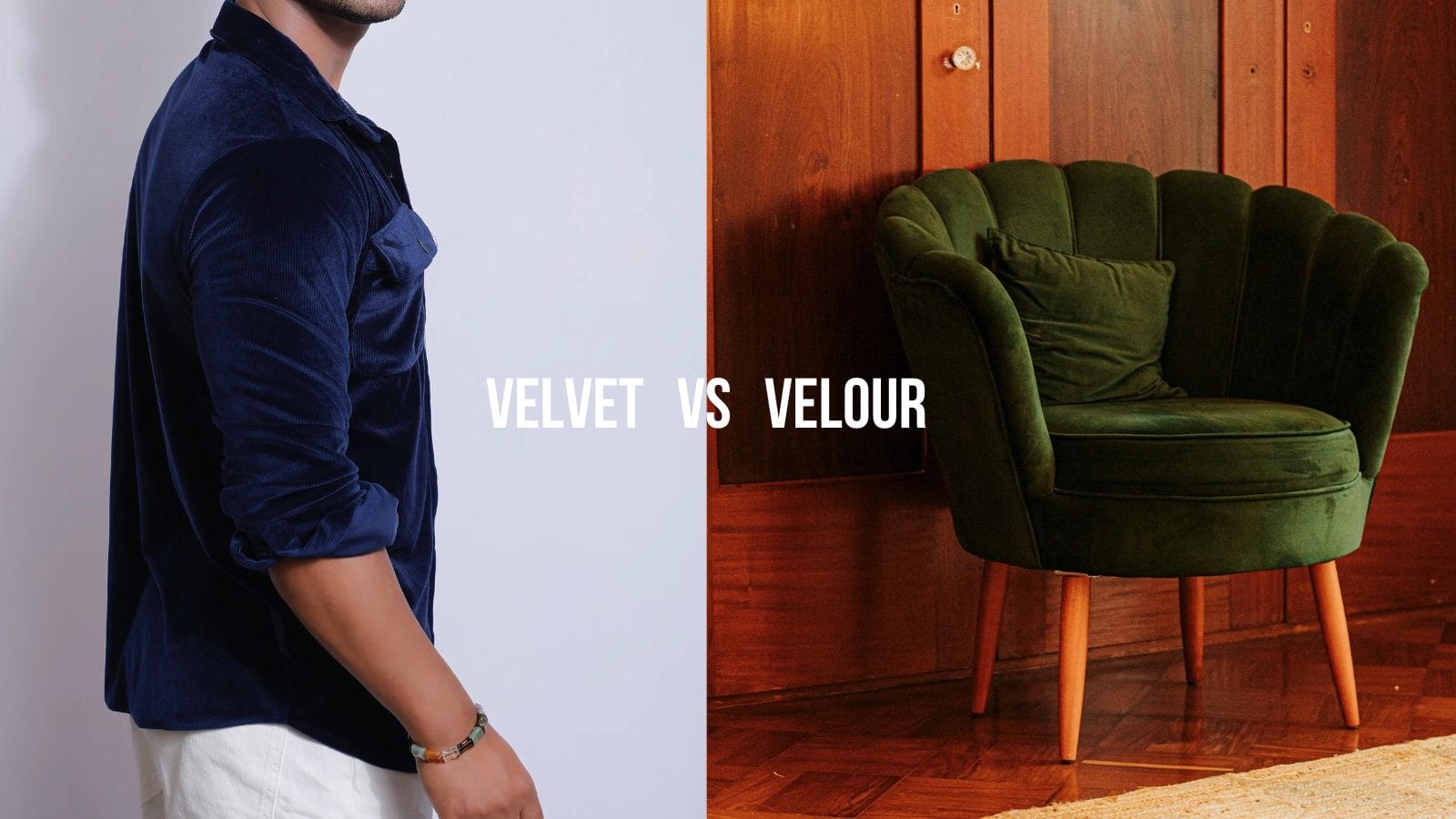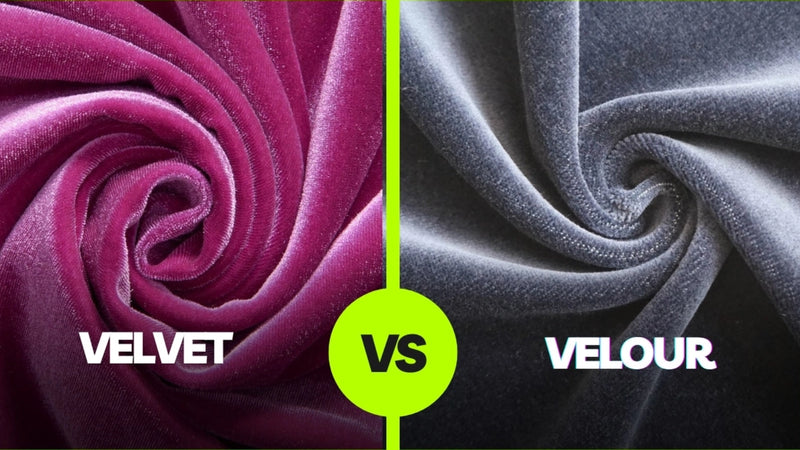Velvet and velour are both popular luxurious fabrics. They captivate fashion enthusiasts and interior designers alike. While these plush fabrics might look similar at first glance, they're quite different.
With its long history, velvet exudes an air of elegance and sophistication. On the other hand, velour, a more contemporary alternative to velvet, offers a soft, plush feel that many prefer.
In this article, we’ll explore their key similarities and differences and help you understand which fabric best suits your needs.
Key Takeaways
- Velvet is woven with two layers, creating an upright pile. Velour is knitted with a medium-length pile for stretchier fabric.
- Velvet tends to be more expensive and formal. Velour offers a budget-friendly alternative with a casual appearance.
- Velvet requires special care and maintenance. Velour is easier to clean and care for in everyday use.
- Velvet has a distinctive opulent sheen. Velour maintains a softer, more matte appearance with greater flexibility.
- Velvet is commonly used in formal wear and high-end furniture. Velour is popular in loungewear and casual clothing.
What Is Velvet?

Before we dive into comparing these two fabrics, let's first explore what velvet is.
Historical Background and Origins
Many opulent fabrics have graced the fashion world, but velvet stands apart. Its rich heritage dates back to the Middle Ages. The word "velours" comes from the French word for "velours," which describes the fabric's signature raised pile surface.
Fabric Composition and Materials Used
Velvet fabric is primarily made from synthetic fibers like polyester, though natural materials like silk and cotton are also common. What makes it unique is its pile-weave construction. Two layers of fabric are woven simultaneously and then cut apart to create its signature raised surface.
Unlike velour, velvet is a woven fabric with densely packed fibers standing upright. This complex weaving process results in that opulent depth and sheen you've come to expect from quality velvet pieces.
Common Uses
Velvet is a popular choice for various applications. Here are some common uses of it:
- Clothing: Velvet is often used in making dresses, blazers, skirts, and evening gowns. Its rich texture and sheen make it ideal for formal and festive wear.
- Upholstery: It's a popular choice for upholstering furniture such as sofas, chairs, and ottomans. This is due to its durability and elegant appearance.
- Curtains and Drapes: Velvet curtains add a touch of luxury to interiors. They also effectively block light and provide insulation.
- Accessories: It's used to make accessories like handbags, shoes, and hats. It can add a touch of elegance and sophistication.
Advantages and Disadvantages
1. Advantages:
- Luxurious Appearance: Velvet has a rich, elegant look. This makes it popular for high-end fashion and home decor.
- Soft Texture: The fabric is known for its smooth, soft surface. It adds comfort to clothing and upholstery.
- Versatility: It comes in various types, including panne, stretch, and crushed velvet.
- Durability: When made from quality materials like silk or cotton, velvet can be quite durable and long-lasting.
- Color Depth: Its unique way of reflecting light gives it a deep, vibrant color.
2. Disadvantages:
- Maintenance: Velvet can be difficult to care for. It often requires professional cleaning.
- Cost: High-quality velvet is typically more expensive than other fabrics.
- Prone to Crushing: The velvet pile can be easily crushed, leading to marks and changes in texture.
- Sensitivity to Moisture: Velvet can be sensitive to water and other liquids, which may cause stains or damage to the fabric.
- Weight: Velvet is generally heavier than other materials. It might not be ideal for all clothing or upholstery pieces.
What Is Velour?

Having discussed the allure of velvet, let's shift focus to another plush fabric—velour.
Historical Background and Origins
Velour comes from the French word "velours," meaning "velvet." Thanks to a new knitting method, it became popular in the 20th century as a cheaper and easier-to-make alternative to traditional velvet.
Velour became popular because it looks like velvet but is more practical and affordable. Though some consider it less prestigious, velour made soft, plush fabrics more accessible to many people.
Fabric Composition and Materials Used
Velour is primarily a knitted fabric woven on a special loom. It embraces versatility through various material combinations, including cotton, synthetic fibers, and blended options.
When you examine velour closely, you'll notice its medium-length pile creates a softer, more casual appearance. This knitted construction gives velour its characteristic stretch and flexibility. Velour is an adaptable choice for everyday garments and home furnishings.
Common Uses
Velour is a popular fabric for its soft texture and opulent appearance. Here are its common uses:
- Clothing: Velour is often used to make tracksuits, dresses, skirts, and tops.
- Upholstery: This fabric is popular for furniture such as sofas, chairs, and cushions.
- Home Textile: It's used in home textiles like drapes, bedspreads, and decorative throw pillows.
- Accessories: It's also used to make accessories such as hats, scarves, and gloves.
- Theater and Stage: Velour is commonly used in theater for stage curtains and backdrops.
- Automotive Interiors: Some car interiors feature velour upholstery for seats and trims.
Advantages and Disadvantages
1. Advantages:
- Softness and Comfort: With a soft and plush texture, velour is very comfortable to wear and touch.
- Aesthetic Appeal: The material has a luxury appearance similar to velvet. It gives an elegant look to garments and home decor.
- Stretchability: It often contains a blend of fibers, including spandex. This gives it good elasticity and makes it suitable for fitted clothing.
- Durability: It's generally durable and can withstand wear and tear.
- Warmth: Velour provides good insulation. It's ideal for colder weather clothing.
2. Disadvantages:
- Maintenance: Velour can be challenging to clean. It often needs special care during washing to prevent damage to its texture.
- Pilling: The fabric is prone to pilling over time, especially with frequent use and washing.
- Weight: It's typically heavier than other fabrics like cotton or polyester.
- Color Fading: The dyes can fade over time, especially with exposure to sunlight or frequent washing.
Velvet Vs Velour: What's the Differences Between Them?

With a clear understanding of the two fabrics, we can now compare the differences that set them apart.
Key Similarities Between Velvet and Velour
Three key similarities unite these two fabrics. They're both popular choices for luxury garments and home textiles.
- First, both materials feature a distinctive pile construction. This creates their signature soft, luxurious feel when you run your hand across the surface.
- Second, these textile varieties share a rich, dimensional appearance. This adds depth and sophistication to any piece they're used in.
- Third, both velour and velvet require special care to maintain their opulent qualities.
These fabrics are used extensively in fashion and interior design. Their sumptuous textures enhance the overall aesthetic.
Key Differences Between Velvet and Velour
| Feature | Velvet | Velour |
|---|---|---|
| Material | Traditionally made from silk, also available in cotton | Typically made from cotton or synthetic fibers |
| Texture | Smooth and luxurious with a dense pile | Soft and plush, has a slightly less dense pile than velvet |
| Appearance | Shiny and reflective | Matte and less shiny |
| Durability | Generally more durable, especially silk velvet | Less durable, prone to wear and tear |
| Cost | Usually more expensive due to materials and production | More affordable, often used as a cheaper alternative |
| Stretchability | Generally non-stretchable | Often has some stretch due to knitted construction |
How to Choose Between Velour and Velvet
Making the right choice between the two materials depends largely on your intended use and personal preferences.
For formal occasions and luxury clothing, silk velvet offers unmatched luxury with its shimmering appearance.
If you're seeking a stretchy fabric for casual wear or cozy home furnishings, velour's flexibility makes it ideal.
Examine both materials closely to guarantee you're getting the characteristics you desire.
Conclusion
Whether you're choosing velvet or velour, you'll need to ponder your specific needs. If you're looking for luxury and elegance, velvet's your best bet despite its higher maintenance. But velour's the way to go if you want comfort and practicality.
Remember, velvet shines in formal settings and high-end decor, while velour works better for casual wear and everyday use.
Learn more fabric knowledge on the Longan Craft Blog, and dive into the fabric world with Longan Craft!
FAQs
Which Is Better Velvet or Velour?
You'll need to choose based on your needs. If you're seeking luxury and formality, choose velvet. If you want comfort, stretch, and easy maintenance, go with velour. They're both great for different purposes.
What Is the Name of Fake Velvet?
The name for fake velvet is velveteen. It's made from cotton or cotton blends, and while it's designed to mimic velvet's appearance, it's stiffer and has a shorter pile.
How to Tell if a Fabric Is Velvet?
You can identify velvet by running your hand across the fabric. It'll feel smooth in one direction but resistant in the other. Look for a dense, shimmering pile and a distinctive, luxurious appearance.


0 comments